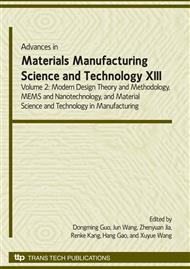p.679
p.685
p.691
p.697
p.703
p.709
p.715
p.721
p.727
Investigation of Metal Droplet Flattening Behavior after Impacting onto Stainless Steel Substrate
Abstract:
During plasma spray forming, the forming quality is directly influenced by the flattening behavior of the droplet impacted onto the substrate, which is determined by the flattening configuration and solidification state of the droplet. In this study, according to the rule of Reynolds number and Peclet number, the flattening behavior of big-size molten droplet impacted onto the substrate with low-speed were experimentally simulated during flattening. The droplets of Sn30Pb70, Zn and ZA12 impacting onto the stainless steel substrate with different velocity were investigated. Splashing degree was introduced to evaluate the flattening profiles of the splats. The relationships between the splashing degree and the impact velocity, Reynolds number and Weber number of the droplet were established. Experimental results show that the flattening and diffusion are impeded by the dynamic viscosity and surface tension of the droplets, and the impeding effects are more remarkable when the impact velocity is lower. The research has a significant ap
Info:
Periodical:
Pages:
703-708
Citation:
Online since:
August 2009
Authors:
Keywords:
Price:
Сopyright:
© 2009 Trans Tech Publications Ltd. All Rights Reserved
Share:
Citation:


